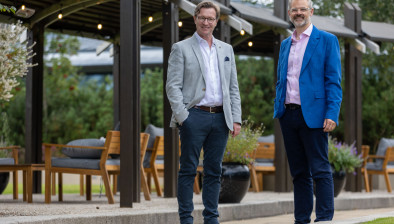Jonathan Seddon: Creativity is key for Scottish commercial real estate

Jonathan Seddon
In an exclusive piece for Scottish Construction Now, construction lawyer Jonathan Seddon explains how the way in which we use commercial real estate has changed and why the sector needs to think outside the box to take full advantage of the opportunities available.
The way we use commercial real estate is changing, and the sector needs to embrace this change to take full advantage of the opportunities.
No matter whether in the office, Build-to-Rent (BTR) or retail sectors, the main theme running through the changes is quality. And not just quality of material. Commercial property needs to deliver continued improvement to the quality of the experience for those occupying and using the property.
The most obvious example of change is when we look at offices. There is pressure on the sector to make them more attractive, in order to bring back levels of collaboration that were often missed while permanently working from home. Offices must also be situated in an appealing location to surrounding amenities.
Space for collaboration, networking and inspiration are now instrumental to office spaces. Without these lures, homeworking will remain the preference for employees who prefer the cost-savings and convenience. The sector is being asked to think outside of the box – quite literally – when it comes to creating offices, to respond to this requirement.
But beyond offices, BTR properties used specifically for student accommodation have become a fundamental and mainstream sub-sector of the UK real estate market.
However, construction costs mean that these schemes are only effective at higher rent. While this presents an exciting opportunity for the mid-market due to ever-increasing demand, the problem with the recently rocketing cost of materials means that we are now further away from, rather than closer to, unlocking this opportunity.
With this in mind, and whilst also considering the demand and drive for more sustainable projects, the student sector is seeing more and more repurposing of existing buildings rather than greenfield development.
And given the current cost of greenfield development, how can the wider commercial real estate sector take advantage of empty buildings?
Continuing with the BTR sector, for buildings that are not only empty but also large enough to be repurposed for mainstream BTR use, empty properties could provide a great opportunity. But it’s less straightforward than with student BTR, because these schemes need scale to be viable, and very few existing buildings are both empty and large enough to be repurposed for general BTR.
However, this provides an opportunity for other sectors. For example, universities can look at repurposing existing buildings to create space for student accommodation. And if that shoe doesn’t fit, then hotels or high-end retail and leisure might benefit from making use of the empty properties.
Indeed, we have seen the success of investing in empty properties with the old House of Fraser store on Princes Street in Edinburgh. An iconic, historical building vacated and left empty was remodelled by Diageo and totally transformed into an exciting visitor attraction for the Johnnie Walker brand.
That development has come at a time when the attractiveness of retail property is climbing. Retail centres are bouncing back, and it is not just the shops. More people are visiting coffee shops, restaurants and bars in retail centres, contributing to the day out experience.
It will be interesting to see how this particular trend develops over the next year.
The way we use commercial property in Scotland needs to evolve, and with land prices currently at a premium, the sector needs to continue to show imagination and creativity.
- Jonathan Seddon is partner and head of real estate at independent Scottish law firm Morton Fraser





















